(Page créée avec « live mealworms: ») |
(Page créée avec « How to raise mealworms at home? ») |
||
| (30 révisions intermédiaires par le même utilisateur non affichées) | |||
| Ligne 3 : | Ligne 3 : | ||
|Main_Picture_annotation={"version":"3.5.0","objects":[{"type":"image","version":"3.5.0","originX":"left","originY":"top","left":-26,"top":-2,"width":1021,"height":601,"fill":"rgb(0,0,0)","stroke":null,"strokeWidth":0,"strokeDashArray":null,"strokeLineCap":"butt","strokeDashOffset":0,"strokeLineJoin":"miter","strokeMiterLimit":4,"scaleX":0.76,"scaleY":0.76,"angle":0,"flipX":false,"flipY":false,"opacity":1,"shadow":null,"visible":true,"clipTo":null,"backgroundColor":"","fillRule":"nonzero","paintFirst":"fill","globalCompositeOperation":"source-over","transformMatrix":null,"skewX":0,"skewY":0,"crossOrigin":"","cropX":0,"cropY":0,"src":"https://wiki.lowtechlab.org/images/7/7a/Levage_domestique_de_vers_de_farine_Capture_d_cran_du_2021-01-29_10-39-33.png","filters":[]}],"height":450.5703422053232,"width":600} | |Main_Picture_annotation={"version":"3.5.0","objects":[{"type":"image","version":"3.5.0","originX":"left","originY":"top","left":-26,"top":-2,"width":1021,"height":601,"fill":"rgb(0,0,0)","stroke":null,"strokeWidth":0,"strokeDashArray":null,"strokeLineCap":"butt","strokeDashOffset":0,"strokeLineJoin":"miter","strokeMiterLimit":4,"scaleX":0.76,"scaleY":0.76,"angle":0,"flipX":false,"flipY":false,"opacity":1,"shadow":null,"visible":true,"clipTo":null,"backgroundColor":"","fillRule":"nonzero","paintFirst":"fill","globalCompositeOperation":"source-over","transformMatrix":null,"skewX":0,"skewY":0,"crossOrigin":"","cropX":0,"cropY":0,"src":"https://wiki.lowtechlab.org/images/7/7a/Levage_domestique_de_vers_de_farine_Capture_d_cran_du_2021-01-29_10-39-33.png","filters":[]}],"height":450.5703422053232,"width":600} | ||
|Licences=Attribution (CC BY) | |Licences=Attribution (CC BY) | ||
| − | |Description= | + | |Description=How to raise mealworms at home? |
|Area=Food | |Area=Food | ||
|Type=Tutorial | |Type=Tutorial | ||
| Ligne 37 : | Ligne 37 : | ||
- https://www.vente-insecte.com/produit/vers-de-farine/ | - https://www.vente-insecte.com/produit/vers-de-farine/ | ||
| − | |Tools= | + | |Tools=sieve |
| − | + | tray, fabric | |
}} | }} | ||
{{Tuto Step | {{Tuto Step | ||
| − | |Step_Title= | + | |Step_Title=Establishment of breeding |
| − | |Step_Content=''' | + | |Step_Content='' 'Beginning of breeding' '' |
| − | + | Upon receipt of the mealworms, they can be placed in a plastic container with the flour and carrots. | |
| − | ''' | + | '''Food''' |
| − | + | Insects are used to a dry environment, their food should be checked weekly. If you want to consume the insects, you will have to give them human food (no peeling). | |
| − | + | Worms eat flour and vegetables (they are crazy about carrots). | |
| − | ''' | + | '' 'The Mealworm Cycle' '' |
| − | + | The worm will mutate into an adult, the adults will lay eggs, and the cycle begins again! Before its transformation, the worm stores as much protein as possible. | |
| − | ''' | + | '' 'Appearance of adults' '' |
| − | + | Once the first adults are present, keep in mind that there will be small eggs in the tray with adults. It is necessary to have 3 bins: | |
| − | - 1 | + | - 1 tray containing nymphs, adults, adult eggs and cardboard |
| − | - 1 | + | - 1 tray containing the larvae, adults can stay a maximum of 1 week in this tray (to avoid having eggs in this tray) |
| − | - 1 | + | - 1 empty bin for transfers |
| − | + | maintenance | |
| − | + | The maintenance of the bins is carried out with each sorting of insects. The flour trays can be changed every month. The flour in the adult container should be stored for 4 weeks, in order to collect the larvae from the eggs. | |
|Step_Picture_00=_levage_domestique_de_vers_de_farine_Capture_d_cran_du_2021-01-29_10-52-33.png | |Step_Picture_00=_levage_domestique_de_vers_de_farine_Capture_d_cran_du_2021-01-29_10-52-33.png | ||
|Step_Picture_01=Levage_domestique_de_vers_de_farine_Capture_d_cran_du_2021-01-28_19-34-32.png | |Step_Picture_01=Levage_domestique_de_vers_de_farine_Capture_d_cran_du_2021-01-28_19-34-32.png | ||
}} | }} | ||
{{Tuto Step | {{Tuto Step | ||
| − | |Step_Title= | + | |Step_Title=Sorting insects |
| − | |Step_Content= | + | |Step_Content=It is advisable to sort the insects every week, or every 2 weeks maximum. Adults should be kept separate from the rest of the group in order to improve productivity and prevent cannibalism! (Indeed, insects eat each other if they do not have enough to eat) |
| − | ''' | + | '' 'How to sort?' '' |
| − | - | + | - Take the three trays, a sieve and a tray with tissue. |
| − | - | + | - Gradually pass the contents of the container to be sorted through the sieve, this operation must be carried out above the empty container. The flour will gradually pass through the sieve. The empty bin will therefore receive the flour from the bin. The insects and the remaining elements (food, dead insects ...) will remain in the sieve. |
| − | - | + | - Gradually place the contents of the sieve on the board with the cloth. The table facilitates sorting by hand. It is possible to tilt the table over another empty bin. Items that are dead or that cannot attach to the fabric will not be able to attach to the fabric, so they will fall out. Live insects (larva and adult) will hang on. They can be separated into two different bins. |
| − | + | It is imperative to remove damp items, to avoid mold. The entire container must pass through the sieve. It is necessary to have an alternation between the trays, as specified in step 1. | |
|Step_Picture_00=_levage_domestique_de_vers_de_farine_P1280025.JPG | |Step_Picture_00=_levage_domestique_de_vers_de_farine_P1280025.JPG | ||
|Step_Picture_01=_levage_domestique_de_vers_de_farine_P1280016.JPG | |Step_Picture_01=_levage_domestique_de_vers_de_farine_P1280016.JPG | ||
| Ligne 100 : | Ligne 100 : | ||
}} | }} | ||
{{Tuto Step | {{Tuto Step | ||
| − | |Step_Title= | + | |Step_Title=Eat mealworms |
| − | |Step_Content= | + | |Step_Content=Precautions |
| − | + | If you want to eat the mealworms, make sure that the worms have received human food (carrot, bread, flour). The first cycle of worms should not be eaten, as mealworm feeding in pet stores is not intended for humans. | |
| − | ''' | + | '' 'Preparation of insects for human consumption' '' |
| − | + | Recover only living insects with sorting. Live insects can then be placed in the freezer for 24 hours. The insects should then be washed with water and a colander. The insects can then be pan-roasted with paprika and garlic. | |
''Bon appétit !'' | ''Bon appétit !'' | ||
Version actuelle datée du 11 janvier 2022 à 19:59
Introduction
Mealworms are easy to breed at home. The interest of this breeding is the production of proteins in an efficient way, as well as a reduced impact on the environment. On average, you have to spend 2 kJ of energy to recover 1kJ with a "mealworm" breeding (energy ratio of 2). To eat 1 kJ of "beef", 16 kJ are needed! (energy ratio of 16)
The mealworm is an insect, therefore an animal!
If you want to know more about mealworms:
Youtube
Outils
sieve
tray, fabric
Étape 1 - Establishment of breeding
'Beginning of breeding'
Upon receipt of the mealworms, they can be placed in a plastic container with the flour and carrots.
Food
Insects are used to a dry environment, their food should be checked weekly. If you want to consume the insects, you will have to give them human food (no peeling).
Worms eat flour and vegetables (they are crazy about carrots).
'The Mealworm Cycle'
The worm will mutate into an adult, the adults will lay eggs, and the cycle begins again! Before its transformation, the worm stores as much protein as possible.
'Appearance of adults'
Once the first adults are present, keep in mind that there will be small eggs in the tray with adults. It is necessary to have 3 bins:
- 1 tray containing nymphs, adults, adult eggs and cardboard
- 1 tray containing the larvae, adults can stay a maximum of 1 week in this tray (to avoid having eggs in this tray)
- 1 empty bin for transfers
maintenance
The maintenance of the bins is carried out with each sorting of insects. The flour trays can be changed every month. The flour in the adult container should be stored for 4 weeks, in order to collect the larvae from the eggs.
Étape 2 - Sorting insects
It is advisable to sort the insects every week, or every 2 weeks maximum. Adults should be kept separate from the rest of the group in order to improve productivity and prevent cannibalism! (Indeed, insects eat each other if they do not have enough to eat)
'How to sort?'
- Take the three trays, a sieve and a tray with tissue.
- Gradually pass the contents of the container to be sorted through the sieve, this operation must be carried out above the empty container. The flour will gradually pass through the sieve. The empty bin will therefore receive the flour from the bin. The insects and the remaining elements (food, dead insects ...) will remain in the sieve.
- Gradually place the contents of the sieve on the board with the cloth. The table facilitates sorting by hand. It is possible to tilt the table over another empty bin. Items that are dead or that cannot attach to the fabric will not be able to attach to the fabric, so they will fall out. Live insects (larva and adult) will hang on. They can be separated into two different bins.
It is imperative to remove damp items, to avoid mold. The entire container must pass through the sieve. It is necessary to have an alternation between the trays, as specified in step 1.
Étape 3 - Eat mealworms
Precautions
If you want to eat the mealworms, make sure that the worms have received human food (carrot, bread, flour). The first cycle of worms should not be eaten, as mealworm feeding in pet stores is not intended for humans.
'Preparation of insects for human consumption'
Recover only living insects with sorting. Live insects can then be placed in the freezer for 24 hours. The insects should then be washed with water and a colander. The insects can then be pan-roasted with paprika and garlic.
Bon appétit !
Published
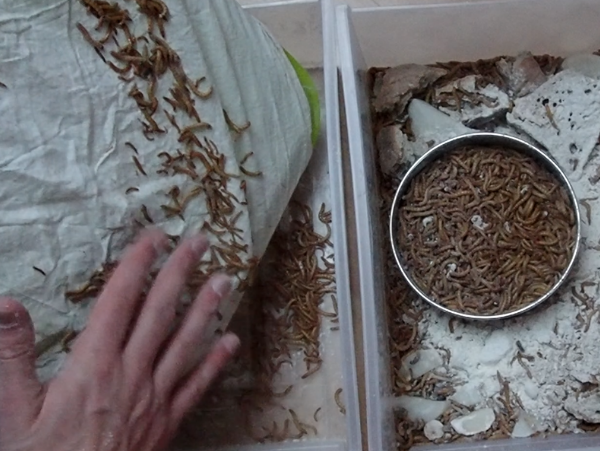
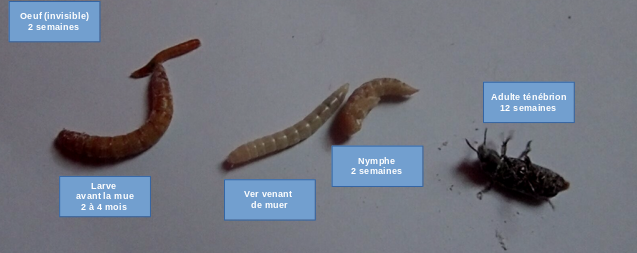
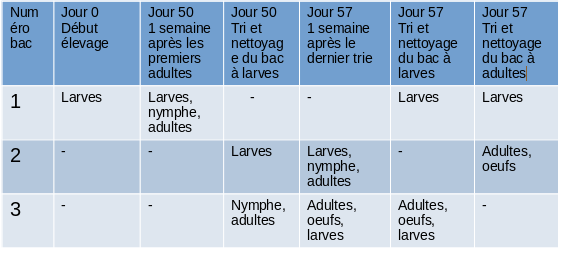
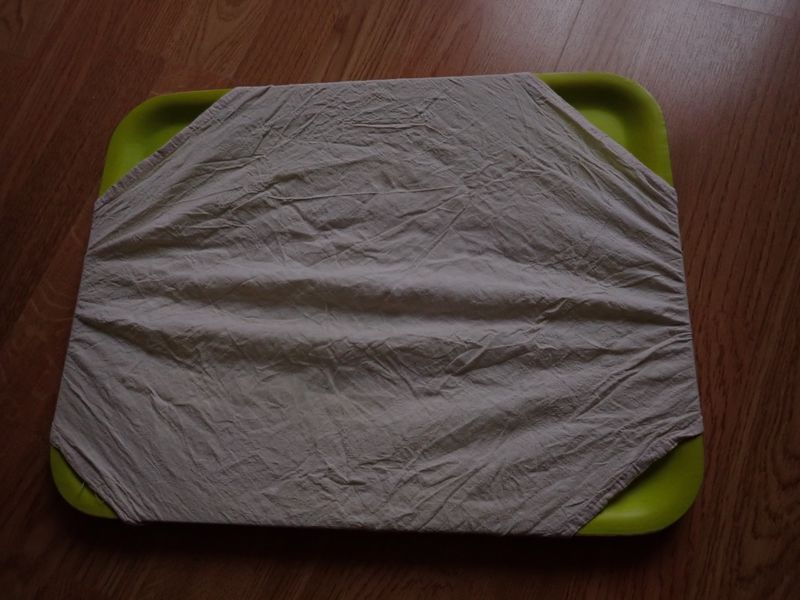
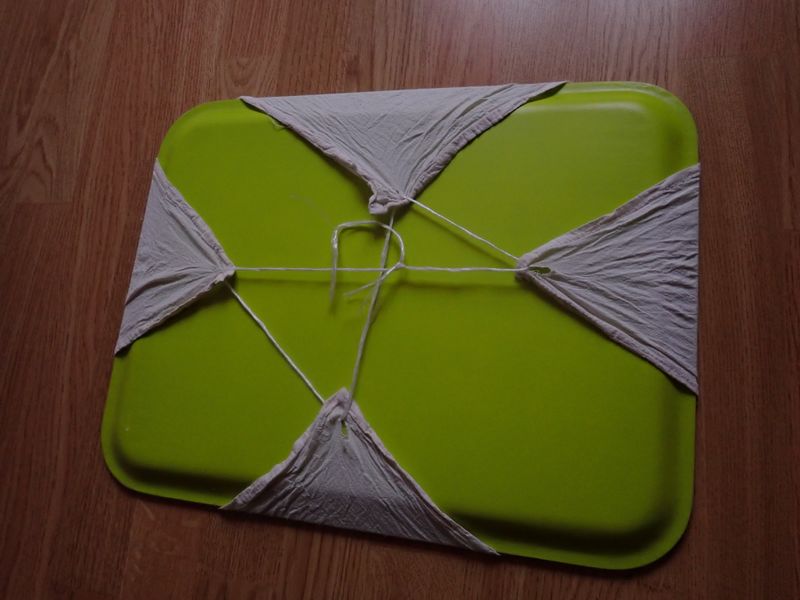
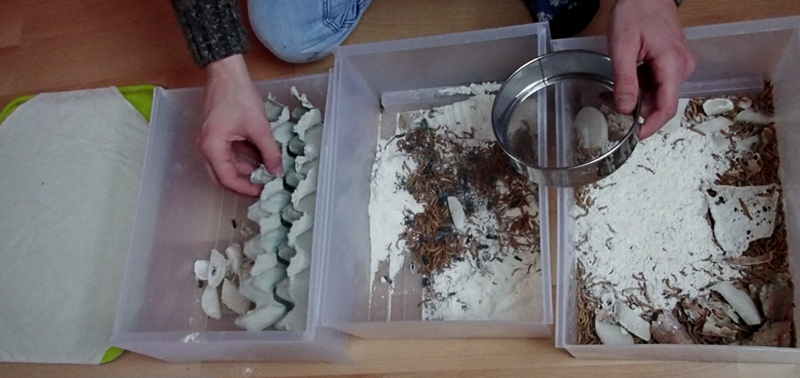
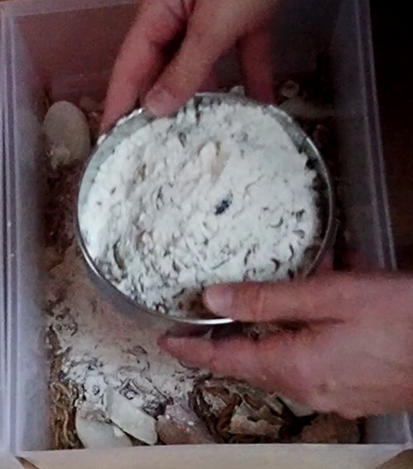
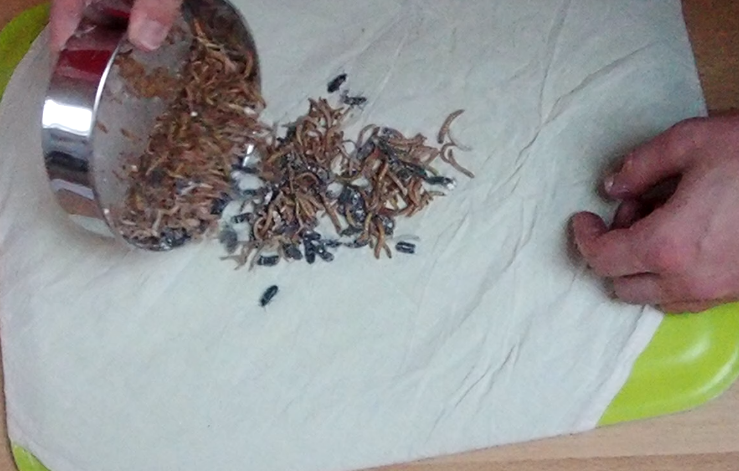
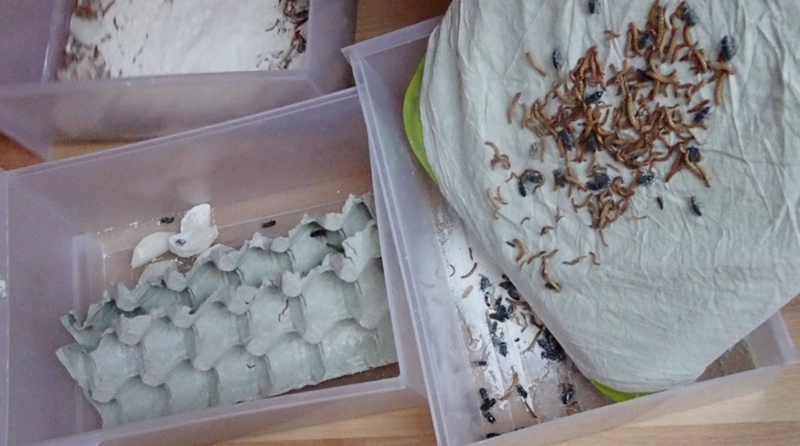
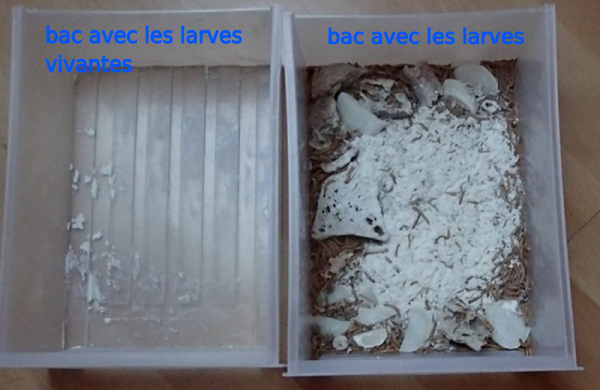
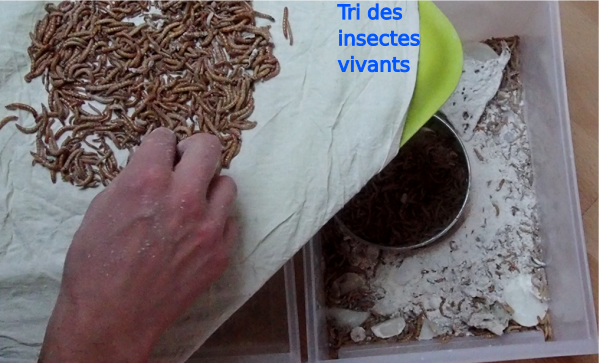
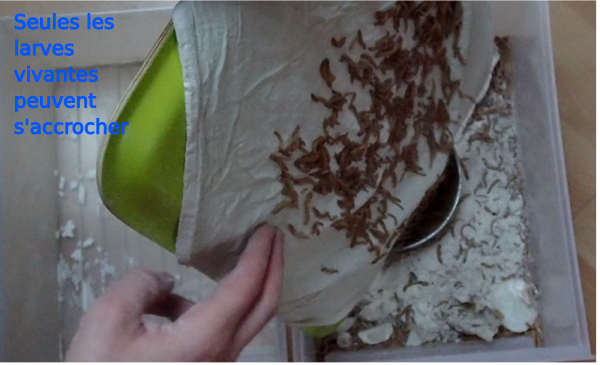
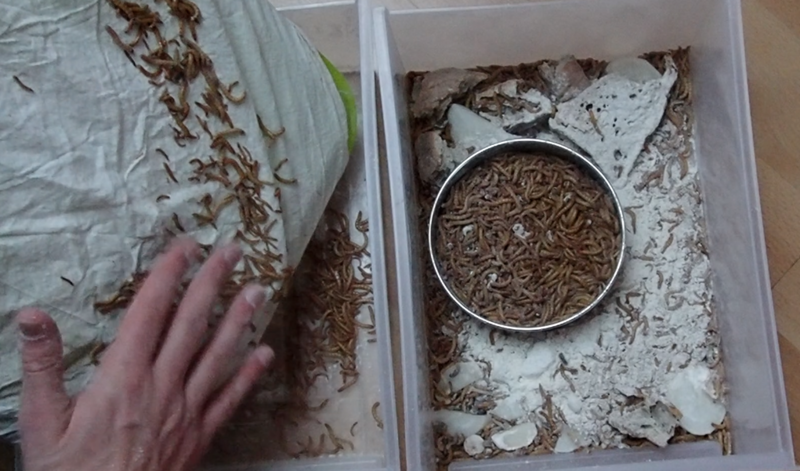
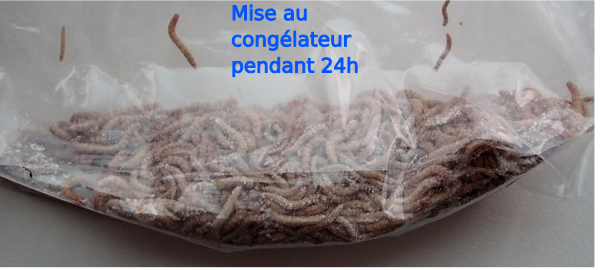
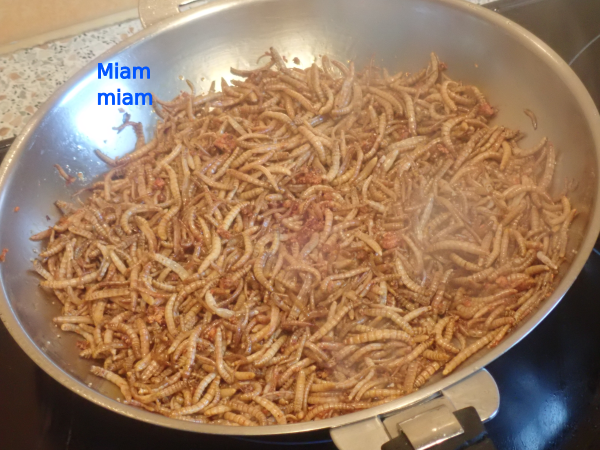
 Français
Français English
English Deutsch
Deutsch Español
Español Italiano
Italiano Português
Português